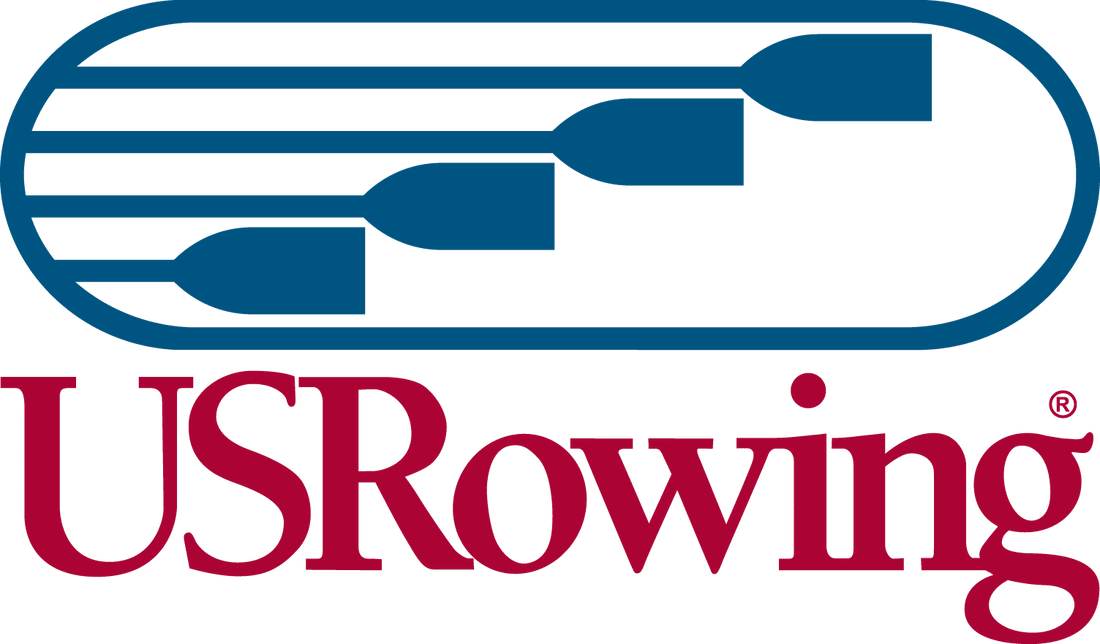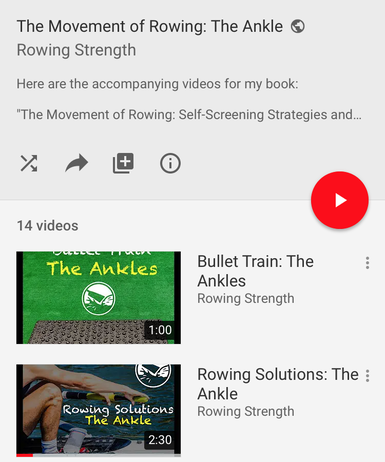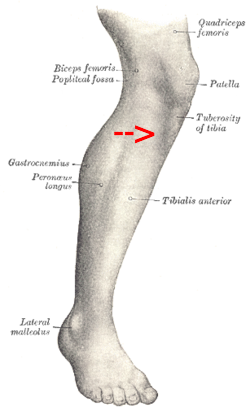|
I wanted to do a quick follow-up post to my US Rowing webinar from last Saturday. I have to say I had a blast and I'm still very humbled and appreciative to US Rowing for having me. Below is the link to the webinar, Q&A, as well as links to my videos on the ankle for your reference. Webinar LinkAnkle Video Links Q&A I wanted to highlight a few questions that came up during and after the presentation. I'll address these here so everyone can benefit. Feel free to let me know if you have any others! 1) What's the name of the app used in the Ankle Number Screen? I use the "Measure" app on my iPhone. This is preloaded on your iPhone already. For android users you can use the "Air measure" app. 2) Do you like to use lifted heels or shoes for squats? I prefer to avoid heel lifts and lifting shoes because it takes away from the process of restoring the normal function of the foot and ankle. One of the reason we have limitations in the first place is that shoes support our feet and elevate our heels. This works against us when we're trying to add strength to the feet, and mobility to our ankles. In an ideal world, we are lifting barefoot and staying within a range that allows for good technical execution. I realize that this isn't always an option and also not right for everybody. 3) How does squat stance on land relate to squat stance in the boat? Is there a benefit to training either way? I'm a strong believer in anatomy. Not everyone has the same hip structure. Some of us squat narrow, others squat wide. Some of us squat with our feet turned out, others squat with their feet straight ahead. This isn't due to technical ability or preference, this is due to hip architecture. I'm not a fan of forcing someone into a position that isn't made for them, especially under-load. When on land pick a squat and stance that fits your body. When on the water adjust the boat to fit your body. Read more about squats here. 4) If you have ankle range of motion over 47 degrees should you set the footplate higher? Normal footplates range from 37-47 degrees. I don't think it is an option to adjust any lower than 37 and any higher than 47 degrees. 5) Shoes or no shoes on the erg? I say go with comfort. If you can row without shoes without pain or wearing away at the skin of your feet there's probably a benefit to not wearing shoes. If your goal is to stimulate your feet more, and rowing without shoes is uncomfortable, I'd try a pair of textured insoles instead. Read more about insoles here. 6) What if you have a significant difference between ankles? Should you split the difference in the angle when setting your feet? I would do everything I can to work on improving your limited side. I would also adjust the angle and row a certain side based on your limited side. For example, if you have the following measurements: 38L, 42R I would prefer that you row Port, and I would set my angle somewhere between 36-40 degrees (plus or minus 2 from 38 degrees). 7) Where do you place the phone for the ankle number screen? You want to place the top of your phone just below your tibial tuberosity. To find this, put your hand on your knee cap, slide your fingers down until you find a big bump, roll to the bottom of the bump. This is where I want the top of my phone. 8) Thoughts on Bat Logic? I like them, especially when paired with Project B shoes. Read more here. 9) Recommendations for hyper-mobile athletes? Hyper-mobile athletes should not be treated the same as other athletes. If you work on mobility it could make things worse. Work on the utilize and maximize categories with these athletes, not the mobilize category. If you row on a 37 degree footplate, I can almost guarantee that this athlete is going to over compress stroke after stroke. Conduct the Ankle Number screen and find the ideal footplate angle for this athlete. 10) How do you feel about pivoting foot stretchers in the boat? I had never heard of these before this question. Looking at their website it looks like they might be good but it's not totally clear to me what these are and how they work. Are they just a more adjustable footplate? If so, I approve. 11) How long should you mobilize for each day? I typically have athletes spend about 5 deep breaths on each muscle group targeted. Deep breaths encourage the body to relax, which is our goal. If you wanted to spend more time you could foam roll and stretch up to 2 minutes for each exercise. 12) Why do you lean towards front squats instead of back squats? Back squats load the spine with more compression than front loaded squats. Since rowers already have a significant amount of load on their spines I prefer to avoid it. Back squats also don't recruit the core and encourage as good of a position.. I find that front loaded squats encourage rowers to engage their core, which changes the position of the pelvis, which allows our hips to move more freely. Often times you'll find that this improves squat mechanics as well as rowing mechanics. 13) How does movement and grip relate to performance? I have found that over and over again, the top performing rowers have the best movement quality paired with the highest grip scores. This is supported by 6 years of data I collected from ~120 rowers twice a year. I believe it's because rowers who have the best movement, have no roadblocks in their way. They're able to see, hear, and feel more. I believe grip is important because grip is an overall measure of health, alignment, and total body strength. If I'm healthy, I'm ready to perform at the best of my abilities. If I'm aligned I have better leverage. If I have more strength I can drive the boat further with each stroke and with less effort. 14) How often should these be programmed? Before and/or after practice? I would recommend Mobilizing & Utilizing before every practice. On days where you are on land Mobilize, Utilize, and Maximize. If changes are too slow, or changes are stubborn, add in the Bullet Train to your daily routine. 15) How do you know if you have asymmetries in foot pressure? You would need force plates on your foot stretcher to measure foot force asymmetries. However, if we look at the research, we can be pretty positive that everyone (no matter side or boat rowed) has some sort of foot force asymmetry. What we can do is look at asymmetries in ankle mobility and try to minimize this difference which may help to reduce these asymmetrical forces. Textured insoles may also help reduce these force. 16) I would like to know your perspective on whether heels should come up on the recovery and the placement of the toes on the drive. I was told that your toes should come up, dorsal flex, during the drive. Is that your recommendation? Great question. Foot contact during the entirety of the stroke is beneficial. Let me explain. On the recovery, I want to be connected to the footplate with my feet, including my toes. By being connected to the footplate I'm encouraging a stable ankle position at the catch as well as complete loading of our fascia (specifically our superficial back line). As I roll over the ball of my foot my heels may lift and I would argue that's beneficial because it further loads our fascia as well as allows us time to place the blade before driving off the footplate. On the drive, foot contact is also important but now it loads a different fascia line, the deep front line. Just like how my toe is connected to my forehead, my toe is also connected to my core. So, when I press off of the footplate, if I keep pressure on the footplate with my toes I actually reflexively engage my core as I swing into my finish. This is ideal in most cases since a common problem for rowers is dumping into the finish (not using their core).
1 Comment
|
Author
Blake Gourley holds a Masters of Science in Sports Performance Training and has over 12+ years of experience working with rowers. Read more Categories
All
Archives
August 2023
|



 RSS Feed
RSS Feed